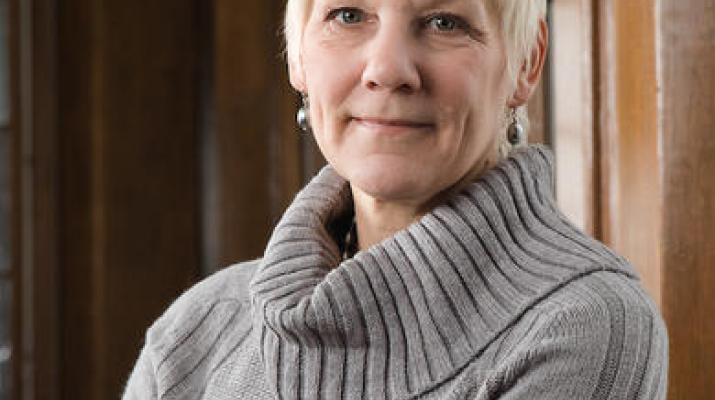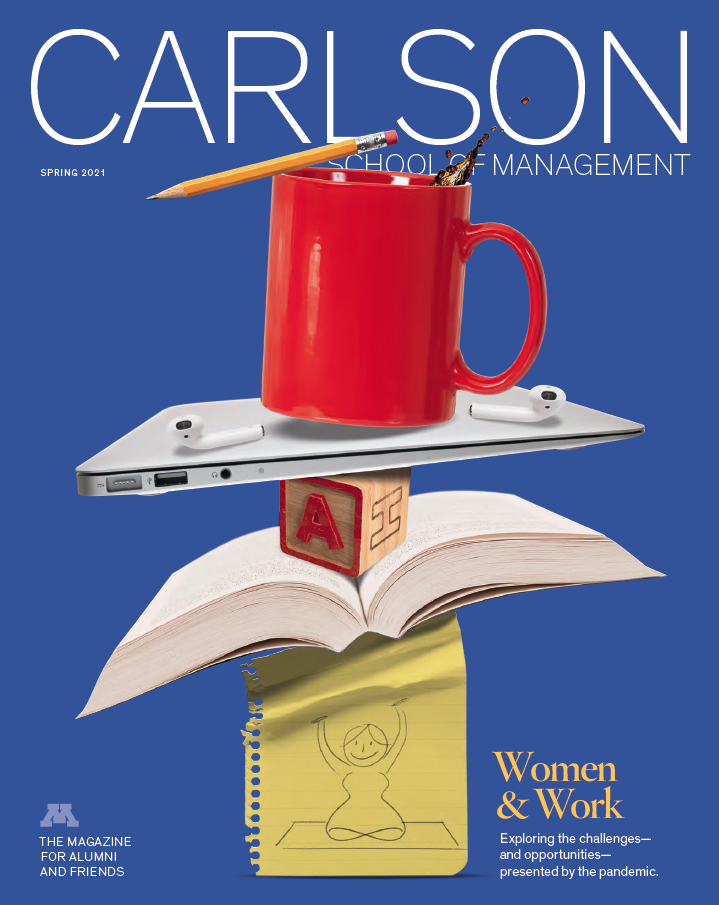
Women & Work: Opportunities
Thursday, April 1, 2021
BY SARAH ASP OLSON
With creativity, intention, and purpose, employers can use lessons learned during the pandemic to design a workplace that works better for everyone.
Corporate America is at a crossroads. This, according to the 2020 Women in the Workplace report. For the past six years, the annual report by McKinsey & Company and LeanIn.Org has laid out responses from hundreds of companies about challenges and opportunities unique to women in the workplace.
But 2020 was not a typical year. It was the year a global pandemic turned the world and the workplace on its head; one in which women have disproportionately borne the brunt of layoffs and furloughs and dropped out in record numbers to care for family. Left unchecked, this crisis threatens to undo important gains women in corporate America have made over the last decade.
Amid crisis, though, is opportunity. Under the harsh statistics there is a clear message: If companies are willing to reimagine where and how we work and move forward with empathy and intentionality—according to the report—“they can retain the employees most impacted by today’s crises and create more opportunities for women to succeed in the long term.”
“The phrase ‘don’t waste a crisis’ is getting bandied about, and I think that that’s very true here,” says Theresa Glomb, a professor in the Carlson School’s Department of Work and Organizations. “I hope we don’t have a situation where in our rush to get back to normal we don’t take the opportunity that is before us to really rethink how we work, where we work, and the opportunities to create a work environment where people can flourish.”
Rethinking the Way We Work
COVID-19 threw many companies headlong into the world of remote work. The sudden shift in flexibility, while unplanned, presents an opportunity for companies to move forward with new practices that work well and do away with those—old or new—that don’t.
“I do think it’s forced people to open their eyes that [remote work] can work for many,” says Mary Zellmer-Bruhn, chair of the Carlson School’s Department of Work and Organizations.
Along with flex space, companies are beginning to rethink employees’ time. A recent Gartner survey of 127 company leaders found 43 percent of companies will implement flex time for their workers post-pandemic. And 90 percent of employers who responded to a Mercer trends survey last July said that productivity has stayed the same or improved with employees working remotely during the pandemic.
“One future great possibility is this ability to craft your time,” says Zellmer-Bruhn. “To be working independently when you need to have less interruption, and you can go into what my colleague, Teresa [Glomb] and others talk about as ‘deep work,’ where you’re not distracted.”
The caveat though, according to Zellmer-Bruhn, is the need to preserve crossing points. “You need those times where people are together and where they’re available. How do you orchestrate that?”
Companies need those check-in points, but so do workers. Glomb talks about a sweet spot of at-home versus on-site work. “After a few days out of the office, you might start to see some detriments in social connection or teamwork and innovation,” she says.
While each company and its employees will need to work out what’s best for them in the coming years, Glomb predicts that it won’t “ever go back to what it was.”
Instead, she envisions a continuum post-pandemic where companies will fall somewhere along the spectrum of fully remote and fully on site. Employees may spend a couple of days in the office or assemble in a co-working space during critical project times.
But to make a system like this work, it falls on managers to create an environment of predictability and flexibility. Those ideas may sound at odds with one another, but Glomb notes they are essential to create a predictable cadence to the workday and week, while allowing employees personal flexibility.
“This might be an opportunity to see what fell away during the pandemic that should stay away,” says Glomb. “What were some of those low-value activities that we as an organization were doing that can fall away? What are the things that we started during the pandemic that were really good, that make sense to keep?”
What Flexibility Means for Women
Allowing for more flexibility has clear benefits for all employees, including reduced commute time and the ability to balance work and home duties. The latter, in particular, is a boon for women who still do the lion’s share of child and home care.
“I think it really laid stark, this pandemic, that all this responsibility fell on the family unit and disproportionately women,” says Colleen Flaherty Manchester, Carlson associate professor in the Department of Work and Organizations.
Normalizing hybrid work, says Manchester, has the potential to move toward parity within any dual-career couples.
“Those structures are already gendered to begin with oftentimes,” she says. “If household roles disproportionately fall on women, or if women are more likely to be the trailing spouse and their career is the one that often can be sidelined or disrupted, it has a potential to open up and reduce some of those frictions for women.”
Changes on the Home Front
The pandemic has also served to open the lines of communication between partners about the inequities of work-life balance at home. While imbalance in household and childcare responsibilities among men and women in opposite-sex, dual-career partnerships is well-documented, with both partners at home the inequities are harder to ignore. Many couples—especially those with children—are motivated to create a more equitable household.
“There’s an opportunity in all of this to renegotiate some of those household responsibilities,” says Glomb. And while it’s far from a simple issue, “there are simple ways to try to bring it back into parity.”
One research-backed strategy Glomb has recommended to her own friends is to take an alternating days approach where parents split the week. For example, Mondays kids go to one parent first for anything they need. On Tuesdays, the other parent takes the lead, handling everything from homework questions to prepping and cooking dinner to bedtime routines.
Employers must consider the unique nature of all parenting and family structures, ensuring all parents and caregivers receive the extra support and understanding required to both parent full time and work full time.

One future great possibility is this ability to craft your time. To be working independently when you need to have less interruption, and you can go into ‘ deep work,’ where you’re not distracted.
Looking to the Future
It remains to be seen how companies will incorporate COVID-era practices in the long term, but it’s hard to imagine corporate America going back to business as usual. Gartner found that more than 80 percent of company leaders plan to allow for some work-from-home options post-pandemic.
Even companies that had an existing framework of employee support are rethinking the next phase of work-life balance.
In 2019, General Mills expanded its U.S. leave policy to include enhanced parental leave, new caregiver leave, improved bereavement leave, and short-term disability benefits. When the pandemic hit, the shift made for a solid foundation upon which to build.
“We’ve heard feedback that the additional time off is strengthening family bonds, allowing for critical caregiving activities, reducing the stress of major life transitions, and removing financial barriers to taking time off,” says Jacqueline Williams-Roll, chief human resources officer for General Mills.
As an executive, Williams-Roll has taken time to listen to employees’ unique needs during this time. As a mom, the Carlson School alumna (’94 MHRIR) has lived it.
“For my family, the shift to working from home and remote learning has been challenging at times as we all adjust to a global situation that is anything but normal,” she says. “As has been widely reported, the COVID-19 pandemic has had a disproportionate impact on working women...so it’s up to companies like General Mills to lead the way. And for our team, we’ve been pivoting and adjusting our processes on the fly to maintain pace.”
When the dust settles and in person work is once again possible, the intense challenges companies and their employees faced during COVID-19 could make way for a better, more equitable workforce—but change has to start at the top. Business owners, executives, and managers can start now by asking important questions that will inevitably shape the way we work for generations to come.
“How do we think about structuring roles? How do we think about structuring jobs? How do we create a work-life [balance] for employees that really does work?” asks Glomb. “We’ve shown that we can do it in this slapdash, all-hands-on-deck [way]. Now let’s take the time to say: ‘All right, what should it look like?’ What is going to really work for people to be not just productive, but also satisfied and happy and truly flourishing at work?”

